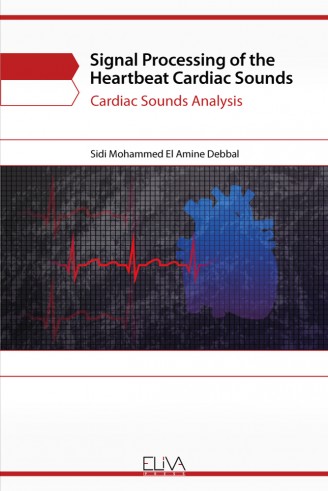
Signal Processing of the Heartbeat Cardiac Sounds: Cardiac Sounds Analysis
€ 54.5
Descripción
Heart activity has long been the subject of various studies, including the first test performed by cardiologists on their patients and auscultation of heartbeats through an ordinary stethoscope. Therefore, the treatment of heart sounds in terms of recordings is very important for the diagnosis of various heart pathologies. The recorded signal is known as a phonocardiogram (PCG). The PCG signal confirms, and most importantly, refines the data of auscultation and provides additional information on sound activities regarding the chronology of pathological signs in the heart revolution, by locating them in relation to normal heart sounds.
Heart sounds are by definition non-stationary signals (whose spectral properties therefore vary as a function of time) and are located in the low frequency range, approximately between 10Hz and 300Hz. The analysis of heart sounds by auscultation, based only on human hearing, remains insufficient for a reliable diagnosis of heart disease and for a clinician to obtain all the qualitative and quantitative information on cardiac activity. This information such as the temporal localization of the sounds of the heart, the number of their internal components, their frequency content, the importance of the diastolic and systolic murmurs can be studied directly on the PCG signal by the use of methods of digital techniques of the treatment of signal.
